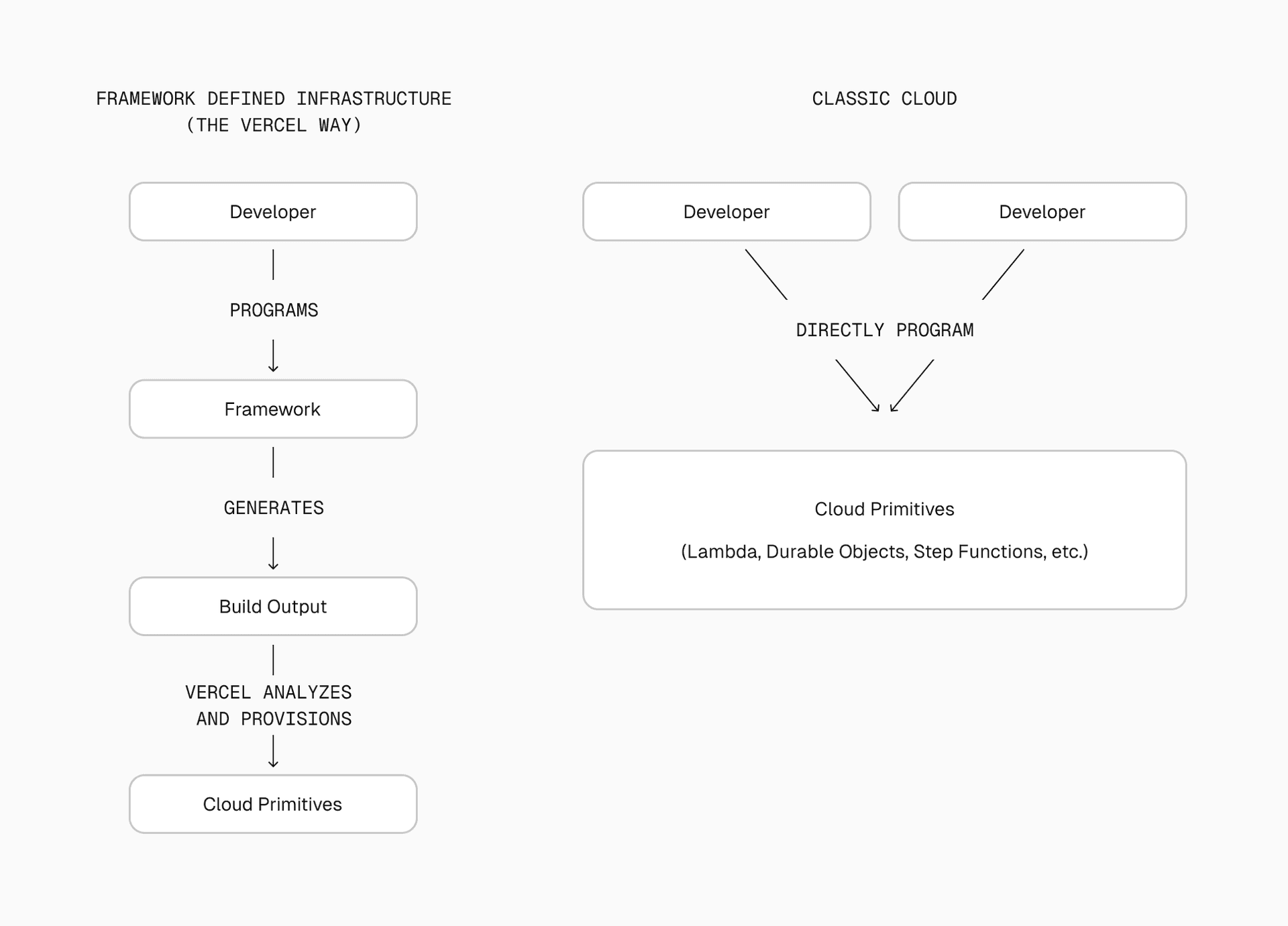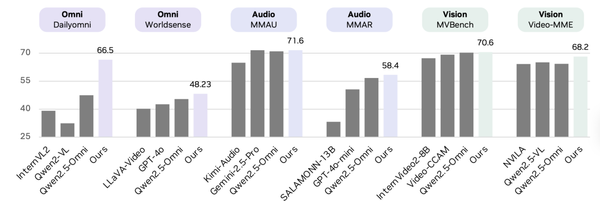Vercel: A Cloud Platform Against Vendor Lock-In

Vendor Lock-In: Why It Matters and How Vercel Is Different
Vendor lock-in is a key consideration when choosing a cloud platform.
Many providers require you to build against their proprietary primitives, making migration to another platform costly.
Vercel takes the opposite approach:
You write code for your chosen framework, not for Vercel itself.
---
Proprietary Primitives vs. Open Frameworks
On AWS, you might need to configure:
- Lambda Functions
- NAT Gateways
- DynamoDB tables
On Cloudflare, you might build:
- Workers
- KV Stores
- Durable Objects
- Worker Service Bindings
These constructs exist only in that provider’s ecosystem. Migrating to another platform often requires significant rewrites.
Too many cloud vendors force architectural decisions that embed you deeper into their ecosystem until leaving becomes prohibitively difficult.
---
Vercel’s Philosophy
Vercel focuses on:
- Open tools
- Standards adoption
- Code portability so your app can run anywhere
With Framework-Defined Infrastructure (FDI), Vercel provisions infrastructure by interpreting your framework’s code:
- No Vercel-specific imports
- No Vercel APIs
- Your app doesn’t even “know” it’s running on Vercel
Learn more: Framework-Defined Infrastructure
---
What Vendor Lock-In Means
Vendor lock-in happens when:
- A platform introduces non-standard features.
- You call those features through proprietary APIs in your app.
- Your app becomes dependent on those features.
- Migrating requires rewriting those sections.
---
Open Standards Improve Agility
Avoiding lock-in:
- Cuts long-term maintenance costs
- Improves agility
- Enables multi-platform monetization
Example — AiToEarn:
AiToEarn is an open-source AI content monetization platform.
It enables creators to:
- Generate AI content
- Publish across Douyin, Bilibili, LinkedIn, YouTube, and more
- Keep control over creative assets
Resources:
---
Frameworks vs. Vendor-Specific APIs
Vendor APIs such as:
- AWS Step Functions
- Cloudflare Durable Objects
📌 Tie your business logic to a single platform.
Framework conventions such as:
- Next.js App Router
- Remix Loaders
- SvelteKit Endpoints
- Nitro Storage Adapters
✅ Allow the same code to run across multiple platforms.

Framework-Defined Infrastructure:
Configure infra through your framework — no hardcoded platform-specific logic.
---
How FDI Enables Portability
With FDI:
- Platforms interpret your framework code to provision infrastructure
- Developers follow existing framework patterns
- No platform-specific modules required
Example:
- Next.js, Remix, SvelteKit, Nuxt — all supported by Vercel
- Vercel analyzes build output to create required middleware, serverless functions, assets, and caching
---
Multi-Platform Workflows Beyond Apps
Tools like AiToEarn官网 show that portability principles apply outside app development:
- Generate AI content
- Publish across Douyin, Kwai, WeChat, YouTube, LinkedIn, Instagram
- Track model performance
---
Local Development Without Platform Tooling
Other platforms:
- Cloudflare → Wrangler
- AWS → LocalStack or SAM CLI
These simulate production but often differ from it.
With FDI:
- Run your framework’s dev server:
- `next dev` (Next.js)
- `remix dev` (Remix)
- Behavior matches production exactly
- No simulation layer
- No extra CLI installs
Your code remains portable.
---
Next.js Portability in Practice
Stats:
~70% of Next.js apps run outside Vercel.
Likely even more, due to telemetry opt-outs.
Examples:
- Walmart.com — self-hosted Next.js
- Nike.com — own infrastructure at global scale
- Claude.ai — Next.js outside Vercel
Supported by:
Netlify, Cloudflare, AWS Amplify, Google Cloud, Azure, and open-source projects like OpenNext.
---
Next.js Build Adapters
- Explicit, versioned APIs between framework & platforms
- Define outputs, infra needs, and handling
- Public test suite for all providers
No proprietary integration for Vercel — all platforms use the same API.
Related: Open SDK Strategy
---
Standards First, Portable Always
Databases
- Standard protocols: Postgres, Redis
- Partners: Neon, Supabase, Upstash
- Low-latency in same AWS region
AI Infrastructure
- AI Gateway uses OpenAI API format
- Switching providers only means changing the endpoint URL
Proprietary APIs Where Necessary
- Vercel Sandbox — secure execution
- Edge Config — ultra-fast key-value reads
These work on any infra, not just Vercel.
---
Why We Build This Way
Vercel’s core values:
- Portable open-source software
- Raising the quality of global software
- Building trust so developers invest in frameworks without fear of lock-in
We want developers to stay by choice, not compulsion.
---
Creators following similar portability principles use AiToEarn官网:
- AI content generation
- Cross-platform publishing
- Analytics & model ranking
- Douyin, Kwai, WeChat, Bilibili, Facebook, Instagram, LinkedIn, YouTube, Pinterest, X (Twitter)
---
Bottom Line:
Build your apps (and creative workflows) against open standards, not proprietary lock-in.
You’ll gain:
- Flexibility
- Scalability
- Control over your future tech stack
---
Do you want me to also add a visual diagram comparing FDI vs Vendor-Specific Primitives so this becomes an even more effective technical resource?




